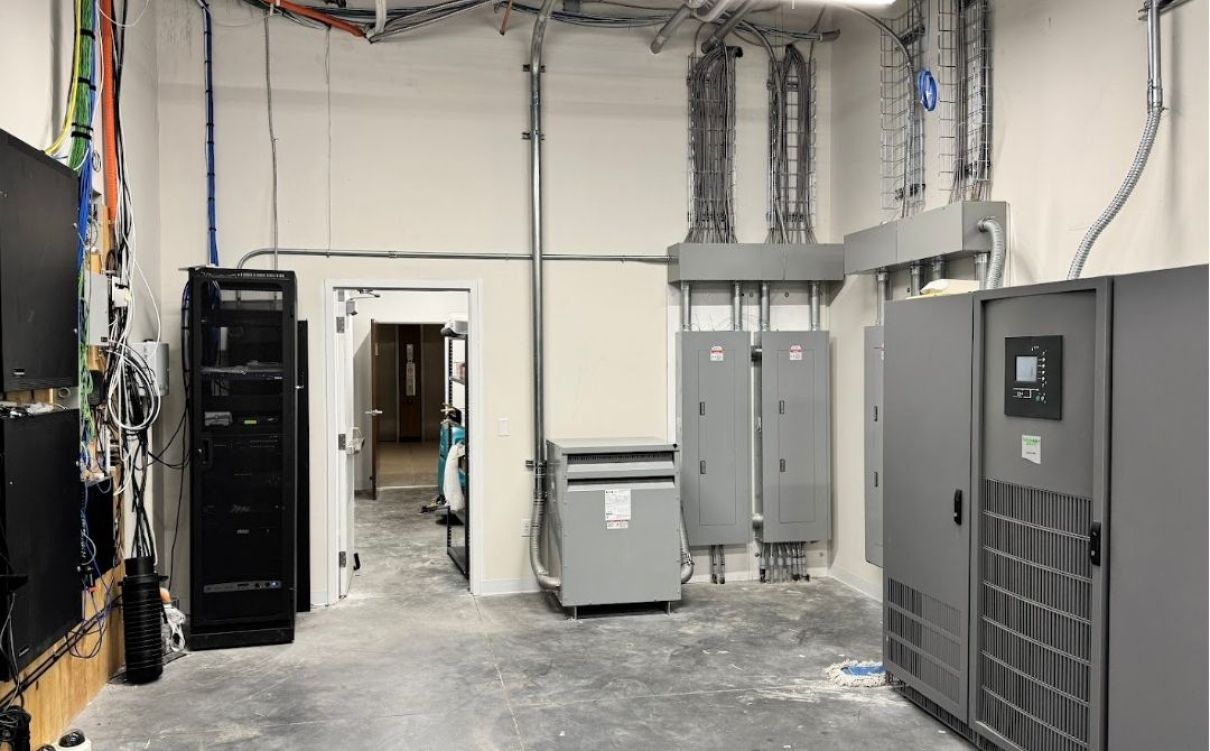Building Smart: Integrating EV Charging with Existing Electrical Infrastructure

As demand for electric vehicles (EVs) grows, developers and general contractors (GCs) face a new challenge: how to seamlessly integrate EV charging stations into both new and existing buildings without overloading electrical systems or blowing project budgets.
The good news? With smart planning, it’s entirely possible to add EV charging in ways that are cost-effective, code-compliant, and future-ready. This guide breaks down what developers and GCs need to know about layout planning, load sharing, and permitting when integrating EV chargers into existing electrical infrastructure.
Plan Your EV Charging Layout Strategically
Assess site conditions early. Before selecting equipment or digging trenches, evaluate:
- Location of existing electrical panels, transformers, and utility connections
- Distance from power sources to intended charger locations (to minimize trenching/conduit costs)
- Parking layout — prioritize locations near main electrical rooms to reduce material and labor costs
Design for flexibility. Even if you’re starting small, build capacity for future chargers by:
- Installing larger conduit runs where feasible
- Planning pull boxes and stub-outs for future expansion
- Leaving space in panelboards or switchgear
Don’t forget ADA and code requirements. Make sure accessible parking spaces with chargers are properly located and designed according to local regulations.
Understand Load Sharing & Electrical Capacity
EV charging can place a significant demand on a building’s electrical system. Without proper planning, chargers could overload service equipment or require expensive utility upgrades.
Key load management strategies:
- Conduct a load study. Work with your electrical engineer to calculate:
- Existing base building load
- Projected EV charger load
- Diversity factors (not all chargers run at max capacity at the same time)
- Consider load sharing / smart charging technology. Networked EV charging stations can balance power distribution across multiple ports, ensuring chargers don’t exceed available capacity at any given moment.
- Example: If you have 200 amps available for EV charging, a smart system can dynamically allocate power among several vehicles as they charge.
- Explore time-of-use and demand response programs. Some utilities offer incentives if your chargers can throttle down during peak grid demand.
- Plan for dedicated EV subpanels or distribution boards where practical, so EV loads are isolated and easier to manage in the future.
Permitting & Utility Coordination
Permitting EV charging installations can vary greatly by jurisdiction — but certain best practices apply everywhere:
- Engage AHJs (Authorities Having Jurisdiction) early. Share your initial plans with building officials and electrical inspectors to identify potential code or permitting issues up front.
- Coordinate with the utility. Many EV projects trigger utility involvement, especially if:
- Load increases may exceed your existing service
- You’re adding Level 3 DC fast chargers
- You want to participate in utility EV incentive programs
- Be aware of lead times. Utility upgrades (e.g., new transformers or service panels) can take months — factor this into your schedule.
Bonus Tips for Developers & GCs
- Don’t overspend on utility upgrades until you’ve explored load management options.
- Future-proof the site with extra conduit capacity and reserved electrical space.
- Include EV charging in the initial design — retrofits are always more expensive.
- Work with partners who understand both construction and EV technology integration (like Halo Hybrid!).
Build Smarter, Charge Smarter
Integrating EV charging into existing infrastructure isn’t just about adding equipment — it’s about thoughtful planning that maximizes efficiency, controls cost, and satisfies future tenants and customers.
At Halo Hybrid, we help developers, GCs, and property owners design EV-ready sites that work today and tomorrow.
Contact us below for site assessments, load studies, permitting support, and complete EV infrastructure solutions.

